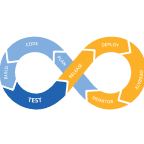
A global asset management company is faced with an opportunity to establish long-term market dominance by revolutionizing the data they use for catering to their clients' best financial interest.








The Project's Essence
Preparing your business for winning the market competition is easier than hoping for the competition’s absence. With the markets' volatility rising exponentially, our client knew it was the right time to leverage technology to ensure its business continuity and efficiency by stepping up their data game.
While covering multiple markets in Europe and Asia, the company's two most significant business units operated on two separate Salesforce orgs. As a result, the operational data could not have been used to its organization’s clients' advantage. With no unified data in place, the sales, marketing, and customer engagement teams literally suffered from thousands of repetitive manual tasks, inaccurate analyses, a scarce user experience, and a high tasking overhead on users.
Leveraging Salesforce to establish omnichannel access for its business units to a unified source of truth was something they needed to do. Companies that invest in seeing a broader picture of their business context, both from inside and outside, can only outdistance their competitors.
On the business side, they were looking for a solution to optimize internal company processes and simplify interactions between departments by introducing a common understanding and standardization of data across B2B channels. From a technological point of view, they wanted two outdated platforms with a megaton of various types of repetitive and redundant data to be merged into one Lightning-based org which would enable them to work so much more smoothly and efficiently.
Solution Design and Implementation
We kicked off the project by setting up business analysis and design thinking sessions. It was instrumental to keep the client's business owners and stakeholders involved so as to synthesize the inputs and integrate them into a holistic and cohesive solution vision. An in-depth system audit showed that the marketing and sales departments could only partially drive the enhanced customer experience because of an inappropriate data leverage from distorted data capture points. Varied data processes and solutions stemming from the client's swift organic growth led the company to a cross-channel view of client interactions.
When all the functional and nonfunctional requirements for the new platform had been gathered, we devised a strategy for migrating the client's Salesforce Classic legacy system into a newer Lightning platform with a redesigned user experience and updated functionality. During one of the copious meetings with the client's business owners, our team came up with an idea to conceptualize Salesforce Lightning for the UX and business needs by applying Lightning custom components to the visual style book. Thus, we were able to add custom functionality that would focus on each department's and client's unique needs, while rendering workflow easy and comfortable. With this decision, we were trying to optimize the CRM's capability of stimulating the sales process, the lack of which was one of the client's major pain points.
Close cooperation with our client helped us clearly see the solution architecture design required for successful project implementation. Our team prepared the system design (including components and dependencies), the data security model, software components, tech stack, data models and flows, integration patterns for the existing and future integrations, delivery and deployment flow, and QA processes. Before implementing the project, we ensured that there was no downtime for our client's system, as we kept the old system up and running until the new one was deployed
The project's implementation started with redesigning one of the existing system accounts into a newly-defined UI & interaction design that was based on a customized Lightning visual stylebook. For this purpose, Avenga built a migration POC to ensure the platform we were building recognized the data classes it was meant to run on, as we handpicked, sorted, and migrated the data for this part of the project. Then, the team developed a CI/CD pipeline that launched the needed data packages through Apache’s NiFi-based script, which was aimed at data flow automation between software systems. Now, the client’s users can identify and see any Salesforce package inside of Salesforce org. As the merger pattern proved successful, we embarked upon a full-scale merger of the two Salesforce Classic orgs into a unified updated Salesforce Lightning solution.
Results
The client now enjoys the solution they were looking to build, as it covers all the stipulated business needs with the help of duly implemented Salesforce solutions. Refined and secure data gathering, management, and synchronization between their teams' systems ensure omnipresent management and sales efficiency. With all the new functionality and an improved user interface on their side, the client's teams relish the updated individualized processes and customized features that help them cater to their customers' most personalized requests. Living up to our promise of being our client's competitive advantage, we have turned the rusty data in their hands into an ability to see what their competitors can't.






